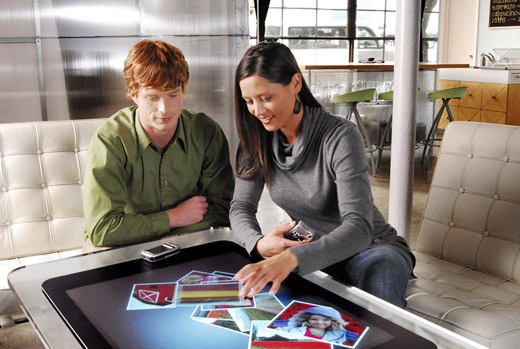Details:
"One of the few 40h models, own this beautiful machine. One of only 400
From http://monome.org/40h/:
the monome 40h is a reconfigurable grid of sixty-four backlit buttons.
buttons can be configured as toggles, radio groupings, sliders, or organized into more sophisticated systems to monitor and trigger sample playback positions, stream 1-bit video, interact with dynamic physical models, and play games. button press and visual indication are decoupled by design: the correlation is established by each application.
There's a growing collection of applications written specifically for the 40h.
Provided on the monome website as well are examples for writing your own applications. the 40h uses usb and talks serial, midi, and open sound control. it plays well with max/msp, pd, processing, reaktor, flash, java, ruby, and many others. all 40h software and firmware is open source. monome aims to facilitate a community of shared exploration
There are also numerous applications and patches which exemplify the 40h as a simultaneous input and output device. several are musically-inclined, though the interface also fits wonderfully into alternative uses. all monome applications are open-source and no additional purchase is necessary to use them. here are a few examples :
* 64step is a versatile step sequencer aimed at fluid composition and editing.
* mlr is a sample-cutting platform intended for dynamic and performative live manipulation.
* life is an interactive version of conway’s original simulation.
* phoenix is a probabilistic arpeggiator with a drawable waveform
design
applied, aesthetic minimalism. the 40h features binary on/off buttons and binary on/off light indication with global brightness control. we believe these parameters most aptly fit both the physical action and size of the buttons. simplicity, constraints, and adaptability promote intuitive interaction.
open source = modification encouraged
all related software is open source. this includes the embedded code, routers (serialio and mapd), and applications. the community is invited to engage in exploring this interface and share findings. also encouraged are hardware modifications, included are available ports in the circuitry for the addition of analog knobs, optical encoders, or anything you could program to interact.
specifications
model 40h
elements 8 by 8 (64 total)
dimensions 6.75 by 6.75 by 1.125
materials 6061 anodized aluminum, translucent silicone, conductive silicone, high durometer silicone, lead-free components and circuit boards
interface usb 2.0
power bus powered
platforms os x, windows xp, linux
the unit contains no logos, text, or markings.
the hardware contains an atmel avr atmega32 microcontroller, interfaced with an ftdi ft245r usb fifo and maxim 7221 led matrix driver. the avr is programmable via jtag (port included on circuit) with gcc and avr-lib."
via ian














































